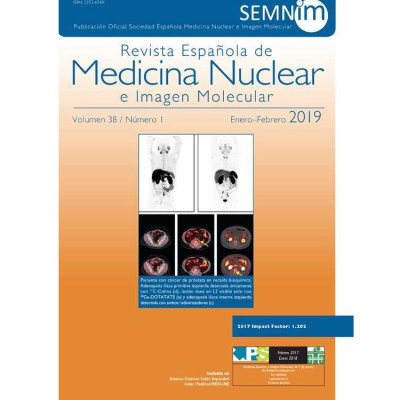Publication
Basal 18F-FDG PET/CT as a predictive biomarker of tumor response for neoadjuvant therapy in breast cancer
A.M. García Vicente, A. Soriano Castrejón, R.E. Pruneda-González, G.F. Calvo, M.M. Muñoz Sánchez, R. Álvarez Cabellos, R. Espinosa Aunión, F. Relea Calatayud
Rev Esp Med Nucl Imagen Mol 35(2) (2016) 81-87
MOLAB authors
Abstract
Purpose
To explore the relation between tumor kinetic assessed by 18F-FDG PET and final neoadjuvant chemotherapy (NC) response within a molecular phenotype perspective.
Material and Methods
Prospective study included 144 women with breast cancer. All patients underwent a dual-time point 18F-FDG PET/CT previous to NC. The retention index (RI), between SUV-1 and SUV-2 was calculated.
Molecular subtypes were re-grouped in low, intermediate and high-risk biological phenotypes.
After NC, all residual primary tumor specimens were histopathologically classified in tumor regression grades (TRG) and response groups.
The relation between SUV-1, SUV-2 and RI with the TRG and response groups was evaluated in all molecular subtypes and in accordance with the risk categories.
Results
Responder's lesions showed significant greater SUVmax compared to non-responders. The RI value did not show any significant relation with response.
Attending to molecular phenotypes, statistical differences were observed with greater SUV for responders having high-risk molecular subtypes.
Conclusion
Glycolytic tumor characteristics showed a significant correlation with NC response and dependence of risk phenotype.















